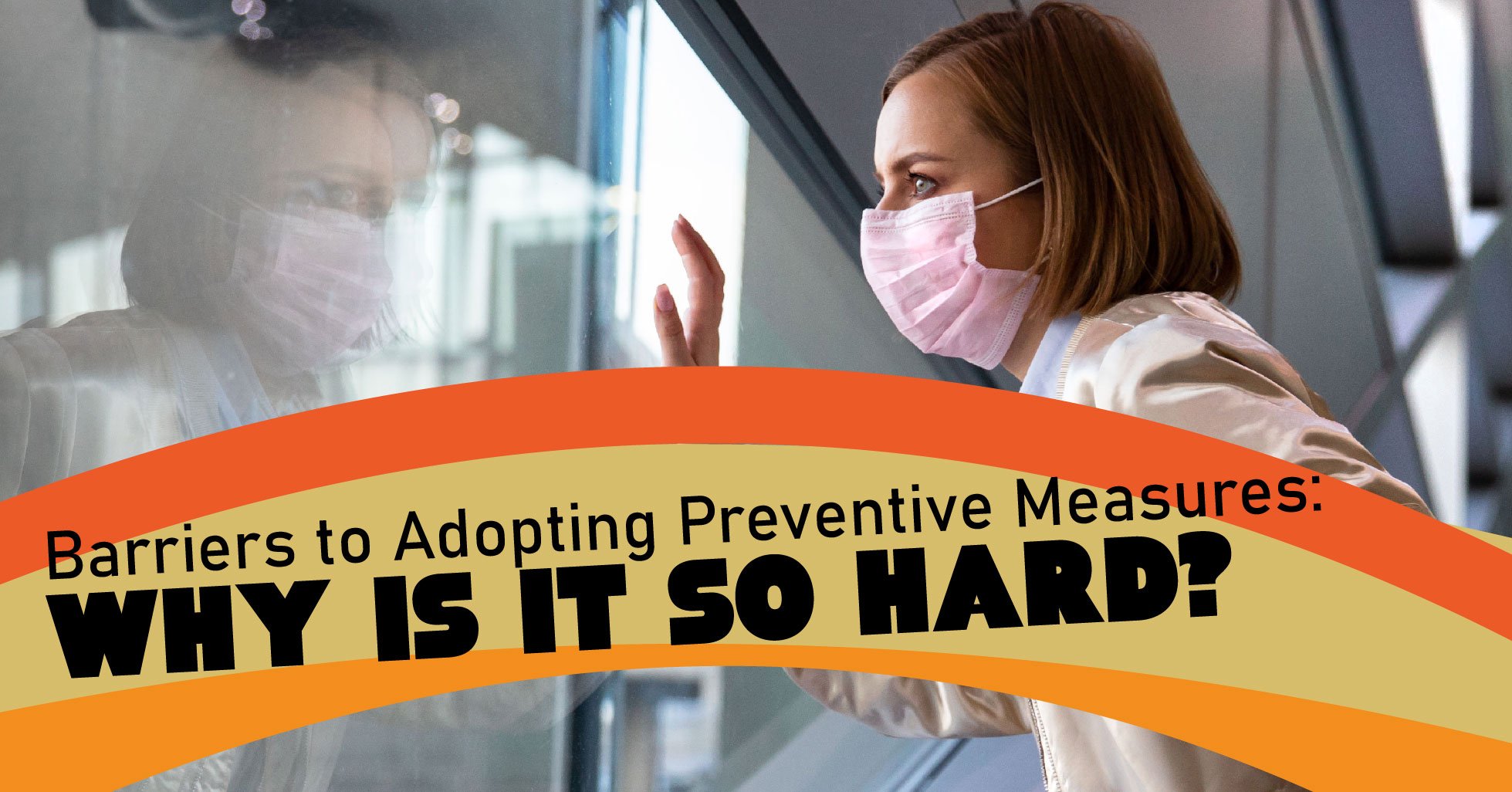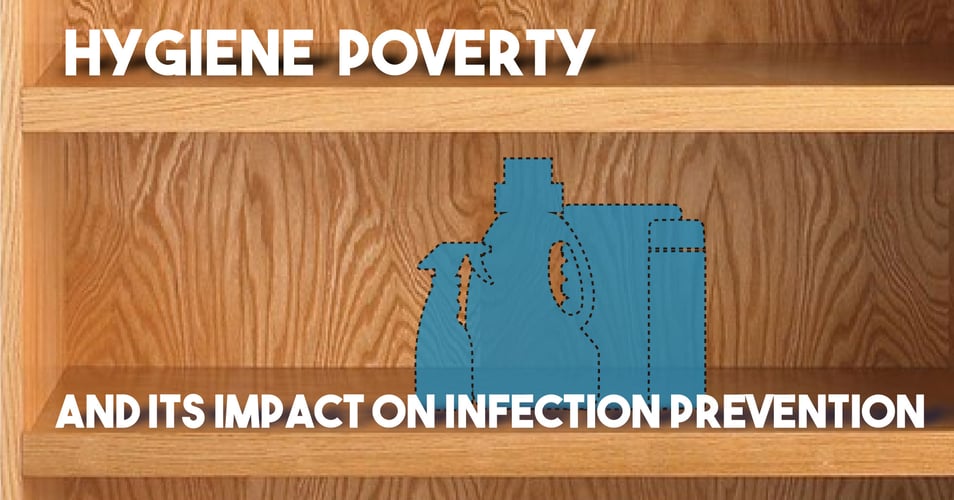Barriers to Adopting Preventive Measures: Why is it So Hard?

 There are so many psychological, sociological, and intellectual barriers to change - anyone who has tried to break a bad habit or motivate a group of people can attest to that! Choices that lead to immediate, predictable, and reliable beneficial change are much easier to make than choices that have to build up over time for the changes to be seen (I'm looking at you, daily walks!). But it turns out, the hardest changes to make are those that prevent problems. In today's post, we will explore reasons why and how this might impact infection control and prevention.
There are so many psychological, sociological, and intellectual barriers to change - anyone who has tried to break a bad habit or motivate a group of people can attest to that! Choices that lead to immediate, predictable, and reliable beneficial change are much easier to make than choices that have to build up over time for the changes to be seen (I'm looking at you, daily walks!). But it turns out, the hardest changes to make are those that prevent problems. In today's post, we will explore reasons why and how this might impact infection control and prevention.The hardest choices to make are those that lead to changes that, while beneficial, are not easily noticed because they prevent potential problems. Prevention is already not as easily seen as a beneficial change because to the individual, it appears that life has gone on as per usual. And if the problems themselves are only potential rather than guaranteed problems, it is often even harder to recognize the benefits of prevention. Here are two IP-related examples. First, vaccines: Many individuals question the need to continued vaccines against diseases "no one gets anymore", overlooking the fact that vaccines are the reasons why no one gets them anymore. Second, healthcare-associated infections (HAIs): Many patients do not know that they have a 1 in 25 chance of getting an HAI, and if they don't get one, their response might often be "well, isn't that the way it's supposed to be?" rather than consider all the preventive measures that were taken (and the costs associated with those measures) to ensure they didn't get an HAI. This response can even happen on a facility-wide bases: "Our infection rates are great! Why do we need all these [insert preventive measures here]". Sometimes, we need a refresher on why preventive measures work and how our minds might be making us doubt our choices.
-
Perceived Immediate Value: Many consumers - individuals and facilities - prioritize immediate benefits over long-term prevention. Preventive products often require an investment upfront with the promise of avoiding future problems, which may not be as tangible or immediately gratifying (or demonstrable).
-
Limited Awareness: Consumers may not be aware of the potential problems that preventive products aim to address, making it difficult to convey the value proposition effectively. Educating consumers about the risks they face and how preventive products can mitigate those risks is crucial but can be time-consuming and costly, especially when a facility faces significant staff turnover.
-
Cost Considerations: Preventive products sometimes come with higher upfront costs compared to reactive solutions. Consumers may hesitate to invest in preventive measures if they perceive them as expensive and not consider long-term costs associated with not investing in preventive measures, especially if they are on a tight budget or prioritize spending on immediate needs.
-
Difficulty in Measurement: Unlike reactive products that offer clear results or solutions to existing problems, measuring the effectiveness of preventive products can be challenging. It's often hard to quantify the avoided costs or benefits of prevention, making it harder to demonstrate the value proposition to administrators who are more removed from the day-to-day operations in a hospital. Infection control is a field with significant data collection and surveillance, so looking at long-term trends can demonstrate long-term impacts of an intervention, but leaders may need to be reminded on a yearly basis.
-
Psychological Factors: Human psychology often leads people to underestimate future risks or procrastinate preventive actions. Some leaders may adopt a "wait and see" approach, believing they can address problems if and when they arise rather than taking proactive steps to prevent them. They will often rely on human interventions (more handwashing, following cleaning protocols, wiping down mobile equipment) rather than investing in a preventative measure that can work behind-the-scenes.
-
Trust and Credibility: Building trust in the efficacy of preventive products can be difficult, especially if there's skepticism or doubt surrounding their effectiveness. Testimonials, reviews, and endorsements can help establish credibility, but overcoming skepticism may still be a challenge. For infection prevention and control, this means turning to peer-reviewed literature and EPA registrations, which can remove a lot of the guesswork and help choose a product with confidence.
- Competing Priorities: Hospitals have finite resources, both in terms of time and money. They may prioritize spending on products that address immediate needs or (claim to) offer more immediate results, relegating preventive products to a lower priority. It is the job of the manufacturer and the researchers to demonstrate confidence in a product's long-term efficacy to overcome this barrier.
From the manufacturer's perspective, companies selling preventive products often need to invest in comprehensive marketing strategies that focus on education, value proposition clarification, building trust, and demonstrating the long-term benefits of prevention. From the hospital's perspective, it is helpful to have periodic product reviews that re-evaluate effectiveness and accessing data to keep in mind what problems are being averted through the preventive measure. It can be a challenge for the individual(s) at the facility to make sure the value is still recognized even after the problem has been "solved," reminding the powers that be just how much it takes to keep it solved.
![EOScu Logo - Dark - Outlined [07182023]-01](https://blog.eoscu.com/hubfs/Eoscu_June2024/Images/EOScu%20Logo%20-%20Dark%20-%20Outlined%20%5B07182023%5D-01.svg)




